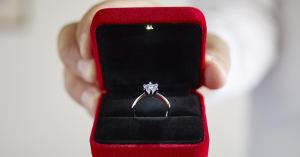The coronavirus pandemic continues to devastate the country and the world. As of Sunday evening, the number of positive tests has surpassed 2.13 million people with more than 117,000 losing their lives to the disease in the United States alone. While the virus may appear to have taken a backseat as protests have swept across the states in the wake of George Floyd’s death, the number of new cases continues to be on the rise.
The Washington Post shared that 21 states saw an increase in the number of the daily new cases in a week than the prior seven days. Those states included Alabama, Oregon and South Carolina. With the coronavirus proving to be an issue, many people are looking for answers when it comes to the spread of the disease, specifically with asymptomatic carriers. While much is to be learned about the disease, there is plenty of information that has been floated around about patients who test positive for COVID-19 but show no symptoms.
Videos by PopCulture.com
Here is a look at what is known about asymptomatic carriers, from how the disease transmits from those who don’t even know they have to it to providing a better understanding of what it means when someone is labeled as an asymptomatic carrier.
What is asymptomatic?
A lot of new terms have been learned over the past few months since the start of the pandemic. One of the most frequent words to be tossed around is “asymptomatic.” In short, the term is as simple as a carrier of COVID-19 that does not show any signs of the virus. While the definition at its core is fairly easy to understand, what makes the term so hard to understand is all of the complexities that come with it, such as how someone can be diagnosed with a disease that they aren’t aware they have, and whether or not an asymptomatic has any risk of spreading it to another person.
The term “asymptomatic” is different than another similar word that has popped up in all of this: “pre-symptomatic.” The latter means a carrier doesn’t show any symptoms initially but later develops symptoms. Someone who is listed as being asymptomatic truly does not have any signs of the disease at any point. The most common symptoms of COVID-19 have been fever, dry coughing and fatigue, while other more complex ones have popped up such as loss of taste and smell. Others include shortness of breath, diarrhea and muscle aches.
Who can be asymptomatic?
Speaking outside of the coronavirus, it’s a common occurrence for an individual to be infected without knowing as the body can fight off many viruses without it ever becoming a problem. In regards to COVID-19, the lack of known information on the strain has made it quite difficult to understand how it transmits exactly, who is most at risk and how it can be prevented. While many of these questions have been answered to an extent, as those who are most at risk are the elderly and those with underlying conditions, much remains a mystery.
From what is known, it appears that anyone can contract COVID-19, thus making everyone prone to being asymptomatic carriers. The Centers for Disease Control and Prevention lists older adults, those who have suffered severe illnesses before or are immunocompromised are among the highest at risk. That being said, COVID-19 has impacted the entire spectrum, from young children to the elderly. It’s not known yet why someone who tests positive for the coronavirus may not show symptoms at all while others do. A recent notable asymptomatic positive test came two days ago as the National Hockey League prepares to restart the conclusion of their season as a member of the Boston Bruins was diagnosed with COVID-19.
How can asymptomatic people spread COVID-19?
Per the latest remarks by the World Health Organization, asymptomatic carriers are still being studied as to whether or not they can or can not spread the disease. This comes after the organization said it’s “very rare” that someone who doesn’t show signs of having the virus would then spread it to another person.
Maria Van Kerkhove, the WHO’s technical lead during the pandemic, shared that the “majority of transmission” has been from those who have symptoms and spread it through “infectious droplets.” She said that they “don’t actually have that answer yet” when it comes to knowing the spread of the disease by someone who is asymptomatic. Earlier in the pandemic, Kerkhove provided some additional information on carriers who don’t show symptoms, revealing that those who come in and say they aren’t seeing any signs of having the coronavirus actually do have some very mild symptoms. This was when she said that the countries that have executed detailed contract tracing discovered it was very rare for COVID-19 to transmit from an asymptomatic carrier.
What are the chances an asymptomatic carrier can spread the virus?
While the coronavirus seems to have slowed down time as many across the nation have remained in quarantine for months, the truth is that the disease is very young and not much is known about it. As a result, there has been a lot of back-and-forth on how the disease transmits, especially when it comes to the subject of asymptomatic carriers. While some studies suggest those who don’t show signs of the coronavirus aren’t likely to spread it, others feel the opposite holds true.
With COVID-19 being highly contagious, the virus can spread from contact, such as touching your face, or from saliva, such as spit coming out while talking. It’s still not known just how contagious, or not contagious, asymptomatic carriers are at this point. WHO contends that those who don’t show symptoms are less likely to spread it to another person, as Dr. Naheed Usmani of the Association of Physicians of Pakistani Descent of North America supports, saying, “If infectivity correlates to the dose of the virus exposure, then asymptomatic carriers would be shedding lower viral copies.” Due to the uncertainty on the spread by those without symptoms, masks being worn in public settings have become a major focal point in limiting exposure.
How do you know if you’re asymptomatic?
One of the hardest questions to answer is how someone knows they have the coronavirus if they don’t show any signs of having it. There is no answer to that question, as the only way of truly knowing is by getting tested. Across the country, testing kits have been in limited quantity, but some areas are opening more and more in terms of access. At the onset of the pandemic, tests were reserved for those at high risk, those who work in the medical field or those who showed symptoms. With governors urging everyone to get tested, even if symptoms aren’t present such as Gov. Phil Murphy’s plea to those in New Jersey, more information will be learned about those who are asymptomatic.
In early April, Dr. Robert Redfield, the CDC director, shared in an interview with National Public affiliate, WABE, that “as many as 25 percent” of those infected do not show symptoms. Another study done in by researchers in Iceland had that number even higher at 50 percent. Multiple other reports have echoed similar sentiments in that a very high number of cases involve asymptomatic people.
What celebrities have been diagnosed as asymptomatic?
Since the pandemic began, everyone from A-list celebrities to everyday people have been diagnosed with the coronavirus. Among the most notable celebrities who tested positive for COVID-19 who were list as asymptomatic include Idris Elba, George Stephanopoulos and NBA All-Star, Donovan Mitchell. Elba was among the first big names to announce that he had the disease. Elba was very candid throughout the recovery and upon his diagnosis, revealing that he showed no signs of having COVID-19. He shared that he went to get tested after seeing other celebrities, such as Tom Hanks and his wife Rita Wilson, test positive. Due to being an actor who was to be on set for an upcoming film, he was able to get tested out of precaution, not because he was showing any symptoms. Stephanopoulos is another who explained that he showed no signs, but underwent testing after his wife had also tested positive two week earlier.
As for Mitchell, one of the younger celebrities to contact the virus at just 23-years-old, he only got tested after everyone on the Utah Jazz underwent testing following the first major professional athlete, Rudy Gobert, was diagnosed.








